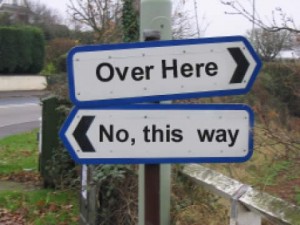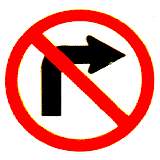In my many conversations about UX, I usually run into people that are looking for advice on how to go from being a fulltime employee to an independent UXer. I love talking about this topic, because it helps me to reflect on how I can get better at being a consultant. However, there is always an underlying theme to the questions that I get, and want to point that theme out here today.
The theme that I see, as I move in and out of these conversations, is that when people ask for advice on how to become a freelancer, what they are really asking is “where and what do I focus on in this vast array of information regarding UX?”. Afterall, in this wide world of information consumption, I would be willing to wager that UX is at the top of both the content consumption as well as content generation lists. We have books, blogs, tweets and more… and all of these things contain information and conversations about how-tos, deliverables, methodologies. With all of this being thrown at us, where do we as UX professionals start?! And worse yet after we have started, how do we know which path is the right path to go down? It can all be so overwhelming and confusing.
Therefore, in order to simplify it all, I’m suggesting we start with learning one thing in order to become not only great independent UXers, but better UXers overall… Process. How many people can say they know the UX/Design process inside and out? Now, I’m not talking about memorizing one person’s or company’s way of getting their work out, I’m talking about the high level conceptual world of the way that we, as UX professionals, bring value. I’m saying that we, first, need to understand why discovery, scoping, design, etc exist. To take it further, we need to understand that we do discovery in part to define the problem, not just so that we can “talk to users” cuz that is the U in UX. We need to understand why we talk to users, and why talking to them at different phases of the project requires different types of activities & questions as well as brings different results. We should be able to access a situation, see the gaps, and know what part(s) of our process we use to fill those gaps.
So how do we learn the Process?There are a couple of different ways. Of course, we know there is a ton of information out there to consume… I would consume as much as you can about different ways to look at the design process. Also, take a look around you at how your leads are leading. What advice are they giving you? Think about how you fit into the project as a whole and what it is you are bringing or could be bringing more of. Get this stuff down pat. But the most important aspect to learning Process? Letting go of the idea that there is a right way to do things. This, is a lie. You must understand that you, as a UX professional, determine the right way for the situation. And by knowing the whys of your Process, you have a conceptual tool kit that allows you define what is ‘right’.
The outcomes of learning the Process and more importantly the whys behind the process are huge. From a consulting perspective you are now in a place where you can truly lead the UX part of a project. You will have the tools you need to listen to each different situation, access what the problem is, and be able to use your process to define and solve the problem. This is what your clients will be looking for you to do. If you want to be more than just a wireframer when you go independent you must remember that as a consultant there is no other UX Lead… it is just you. And therefore the most important thing you can learn is how and why you do your work, and what that means for those you work with. From a fulltime perspective, this is also important because it helps you to gain traction on the project team and become an invaluable member. In both instances it allows UX to begin to move out of the interface only game, and into the problem solving game. And this is where we want to be, a place where we lead by defining & solving the greater problem. Doing so is called creating an experience, and that is what the X in UX is all about.

